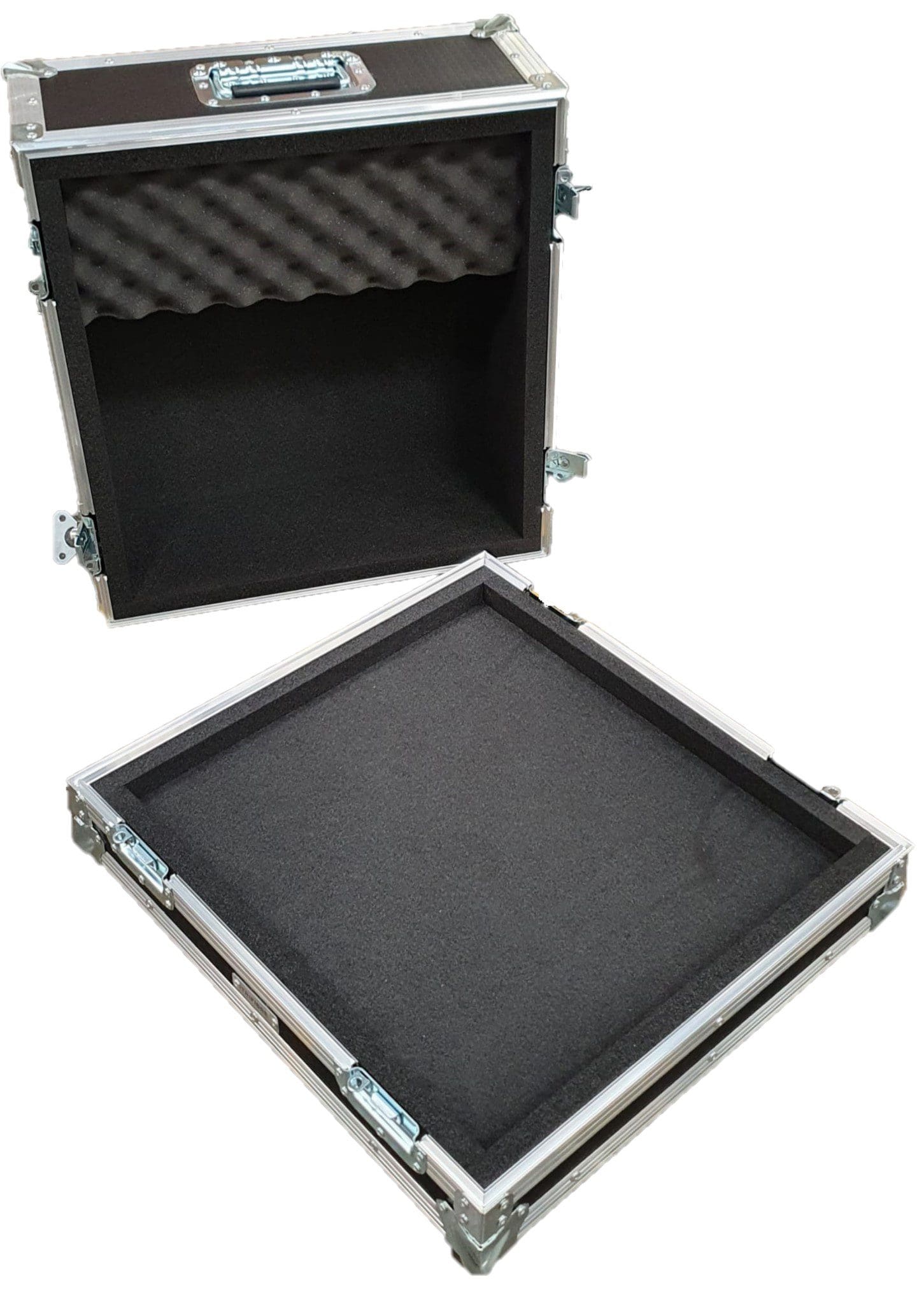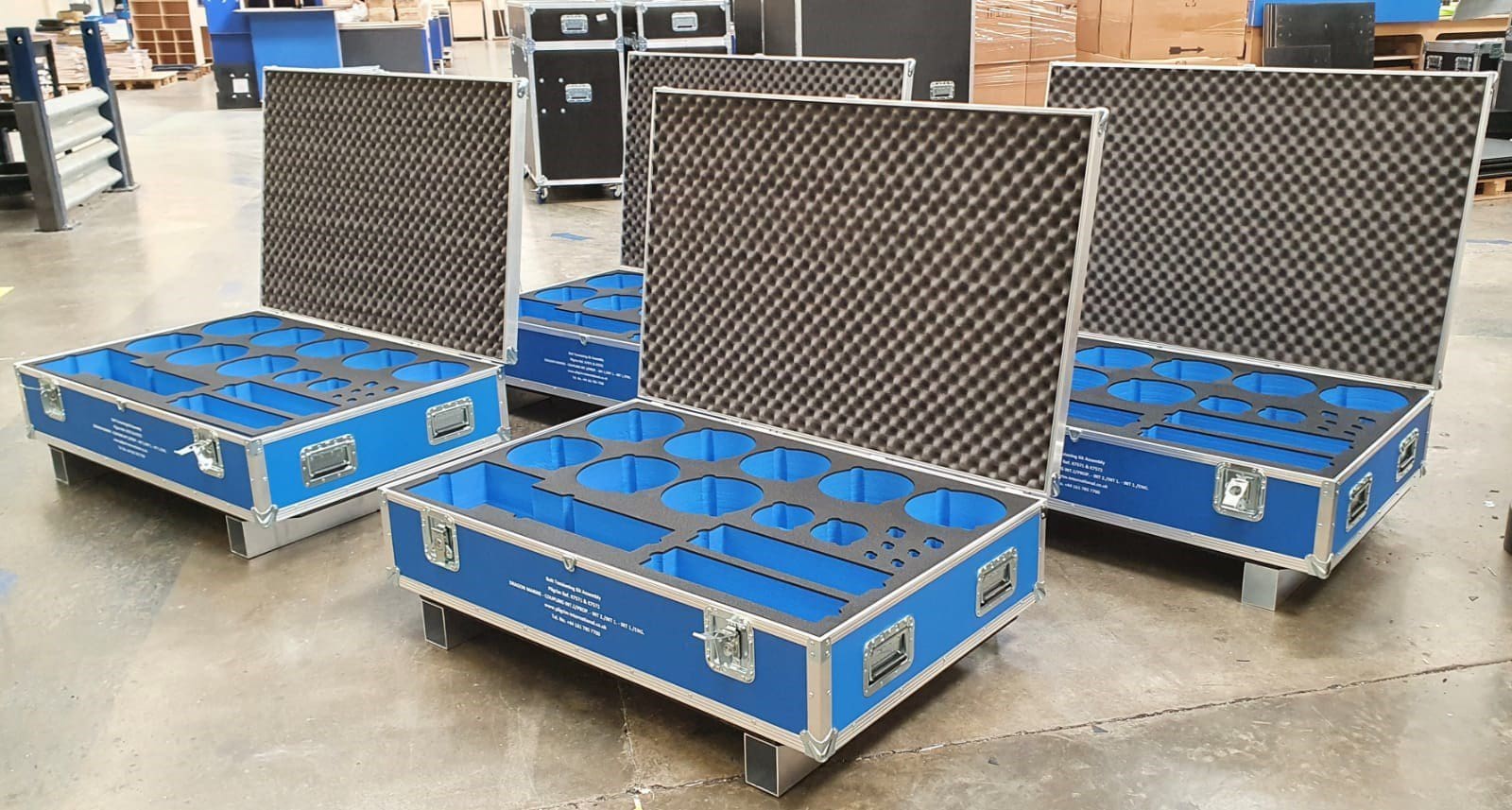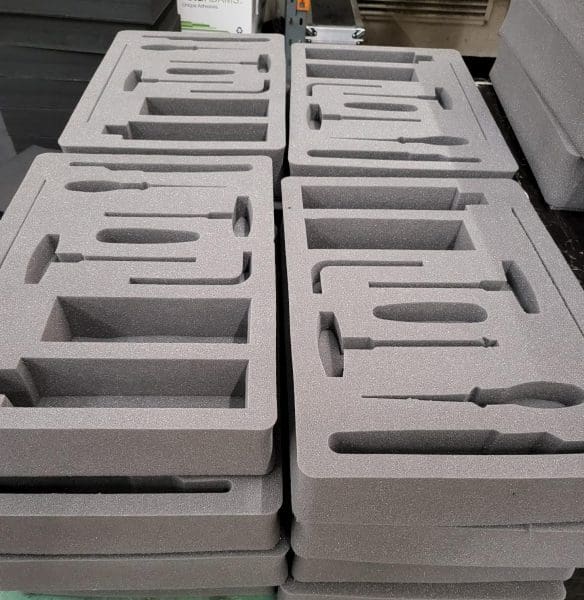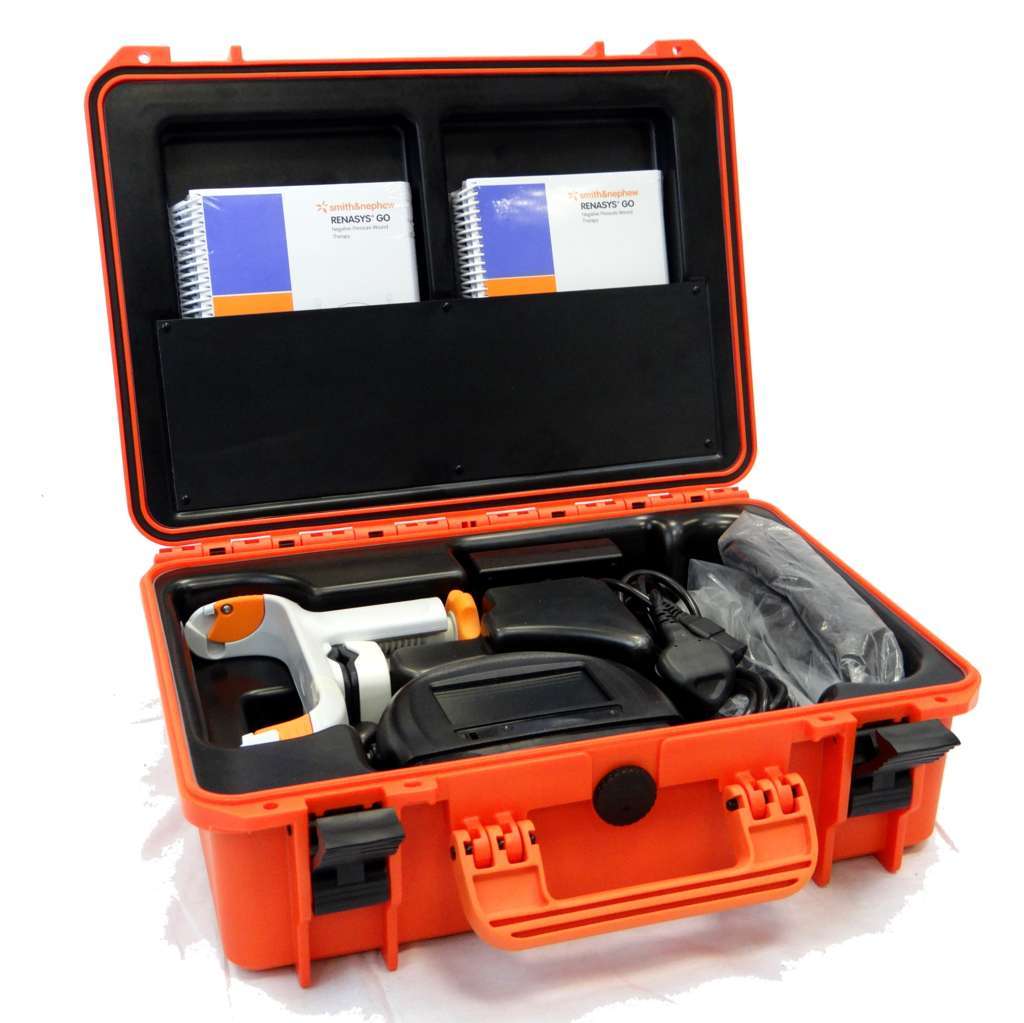Case and Packaging Internals – Which is the right solution?
Trifibre’s industrial packaging and plastic moulding facility houses provides it’s customers with a complete variety of specialised industrial packaging options. When recommending solutions for customer requirements there are many factors to consider each offering alternative benefits. The internal lining of a solution, whether it be flight cases, packing crates, plastic cases, bags or otherwise is just as important as the design and specification as it’s exterior.
Foam lining and foam padding
The most simple solution to provide protection internally is to line the internal walls with foam. This can range from a straight forward lining to more complex designs incorporating strategically placed foam blocks in order to further secure a unit or provide extra protection to fragile areas. Foam is available in various density’s and thicknesses for example closed cell plastazote which itself is available in different density variants and also provides a waterproof lining to open cell alternatives which are often softer but when used with an appropriate thickness provides excellent shock absorption. Foam lining is often preferable to house larger or more square shaped units.
Foam can be recycled with access to a specialist however foam can be difficult for consumers to recycle as currently curb side recycling is not available. That said foam can last for hundreds of journeys and can often be repurposed.
CNC routed foam inserts and Waterjet cut foam inserts
Hard density foams can be precision cut using CNC or waterjet machinery. This provides a near perfect housing and can be an ideal solution when housing a mixture of multiple medium or smaller sized units for example a large drone with controllers and spare accessories as layouts can be optimised to maximise the space taken and therefore save on the size of the external design and the cost of shipping as a result.
Foam press outs
Low and medium density foams as well as thinner thicknesses of hard density foam can be pressed out using a specially designed custom tool. This is ideal for protecting multiple smaller units for large quantity requirements as the cost of the tool is often mitigated by the reduction in time and cost taken to produce, it is not ideal however when thicker hard density foam protection is required.
Vacuum formed trays
Vacuum Forming is a type of thermoforming. Vac formed trays and inserts can provide a good alternative to foam equivalents. They can be designed and tooled to house intricate shapes and provide a lightweight wipe clean housing that is easily recycled and swapped so that the external packaging can be easily repurposed. Vacuum formed inserts are especially popular for transporting medical items. When used as a standalone tray such as a standalone tool organiser tray, a vacuum formed solution will also often save space against a foam alternative as it can be produced with thinner walls and is a more rigid structure and they can also be nested together when not in use. As an insert a vacuum formed tray alone will not provide good shock absorption however so it is sometimes inserted onto a foam base.



